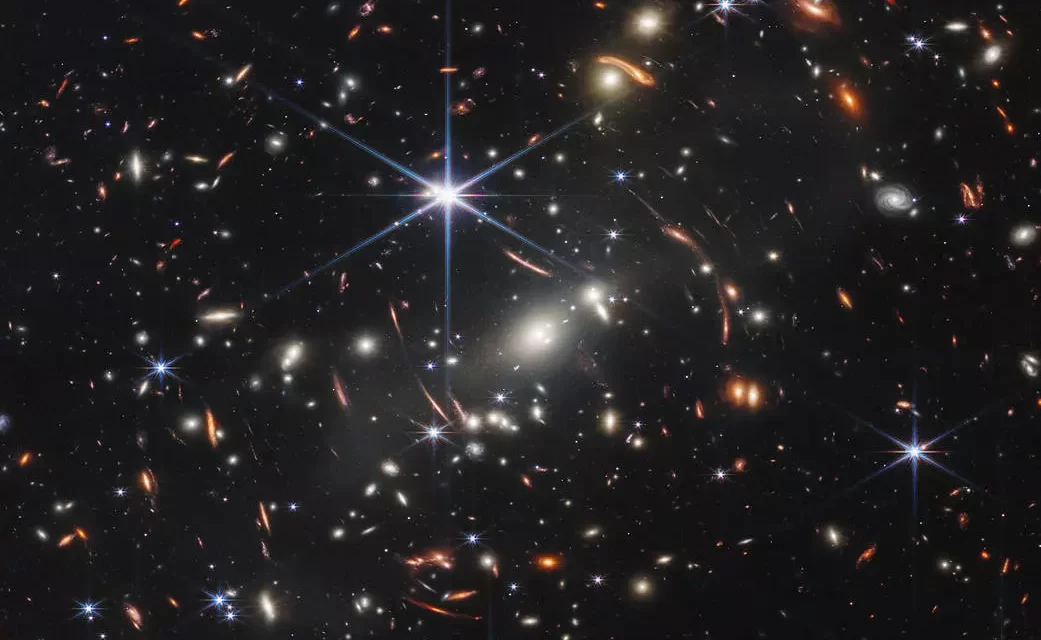NASHVILLE, Tenn. (BP)—Within images released by the James Webb telescope, Christians can not only get previously unseen views of the cosmos, but resounding confirmation of God’s creative design and man’s perspective in it.
David Block, emeritus professor at the University of Witwatersrand in Johannesburg, South Africa, and Danny Faulkner, who taught for 26 years at the University of South Carolina-Lancaster before joining Answers in Genesis, spoke with Baptist Press about the magnitude of the Webb telescope’s findings and how those discoveries are challenging Christians and non-Christians alike.
Both astronomers joined peers in recognizing the magnitude of the recent pictures presented by NASA while also pointing to how the images impact them as believers.
“My initial response was complete awe,” said Block, who also spoke about it on South African TV. “We are seeing extraordinarily rich, technical detail. It’s a marriage of science and art.”
For Faulkner, the images also confirm God’s handiwork in the universe. And while seeing billions of galaxies containing innumerable planets tempts scientists with questions of life among the stars, Faulkner doesn’t think any will be discovered.
“I predicted (July 11) before they presented the first photo that they would show something saying they had found an Earthlike planet,” he said. “I was wrong, and surprised, because that would have been huge.
“They’re hoping at some point to detect an exoplanet that’s comparable to the Earth in size and might have the same kind of environment we have… I don’t think they’re going to find it, but that’s their motivation.”
The James Webb Space Telescope was developed to utilize infrared technology to extend and complement discoveries brought by the Hubble Space telescope. Launched on Christmas Day last year, its mission duration is to be an estimated 5-10 years.
The telescope uses 18 mirrors coated with gold that, upon reaching a point 1 million miles from Earth toward the sun, opened up very much like a flower to gather in light. The first full image from the telescope was released July 11 during a public event at the White House with President Joe Biden.
The Webb telescope is capable of looking 13.6 billion light years away. For perspective, the Milky Way Galaxy is approximately 100,000 light years across.
The Webb telescope gathers nearly 12,000 times as much light as the common 60 mm brand most amateur astronomers start with in the backyard, Faulkner said. It also is nearly three times larger and collects seven times as much light as the Hubble.
Those dimensions and infrared imaging are bringing pictures of the most distant galaxies. And, the discussion is something to which Christians should pay close attention.
“We should listen to what’s being said and found,” Faulkner said. “And we should always interpret what we find in terms of God’s Word. That’s what Answers in Genesis is all about. We view God’s Word as the foundation for everything, and it’s the standard by which everything is compared.”
In Block’s career, he has been a visiting research astronomer at the Australian National University, European Southern Observatory in Germany, California Institute and Harvard University. He’s returning to Harvard for another visit in January.
Like Faulkner, he hopes Christians take a healthy dose of perspective from the Webb telescope’s findings as they relate to the Bible.
“Theologians could not control the geography of the heavens, as much as they wanted to,” he said, referring to Bible scholars of the past who claimed that Scripture placed Earth at the center of the universe.
“They were wrong,” he said. “This leads us to a question of how to exegetically, correctly expound on… a beautiful harmony between science and Scripture. But you have to understand Scripture contextually.”
Block also agreed that despite the number of planets to be discovered, “we should not be surprised if we find that life on Earth is unique.” But he added that such a determination in no way diminishes God’s role as Creator.
“God, in His providence, loves creating, just like (He does) flowers and daisies and fish. I wouldn’t be surprised if God made billions of other planets, but ours is unique.”
While believers may see the Webb telescope’s images as undeniable proof of God’s existence, Block said many will simply not see it that way.
“In general, no matter what images you put in front of people who deny God’s existence, they will choose to not see God’s handiwork,” he said. “Jesus Himself performed miracles right in front of the crowds, and those crowds rejected the miracles. Coming to faith is a deeply personal experience.”
For his part, Faulkner knows of people who believed in creation before becoming believers.
“One was an atheist who looked at the evidence and realized there must be a Creator,” he said. “About a week later he had a moment of realization that if there was a Creator, He must expect something of him.
“If there’s a Creator, we better pay attention to who He is because there are eternal consequences at stake,” Faulkner said. “He became a Christian shortly thereafter. Most scientists, I believe in their hearts, know that if they reach that conclusion that they have to take that next step. Most are so committed to naturalism that they can’t bring themselves to that conclusion.”
Faulkner believes in a Young Earth approach to Creationism, a position not shared by Block. However, both agree that the evidence for God cannot be ignored.
“There are many Christian astronomers. We may disagree on the age of creation, but we respect each other and see God’s handiwork,” Faulkner said.
“I have secured an even greater degree of excitement in looking at these images towards God and His creation,” Block said. “It gives me a greater degree of wonder, of mystery, of awe and in this time of war and pandemic, a greater sense of purpose.”






